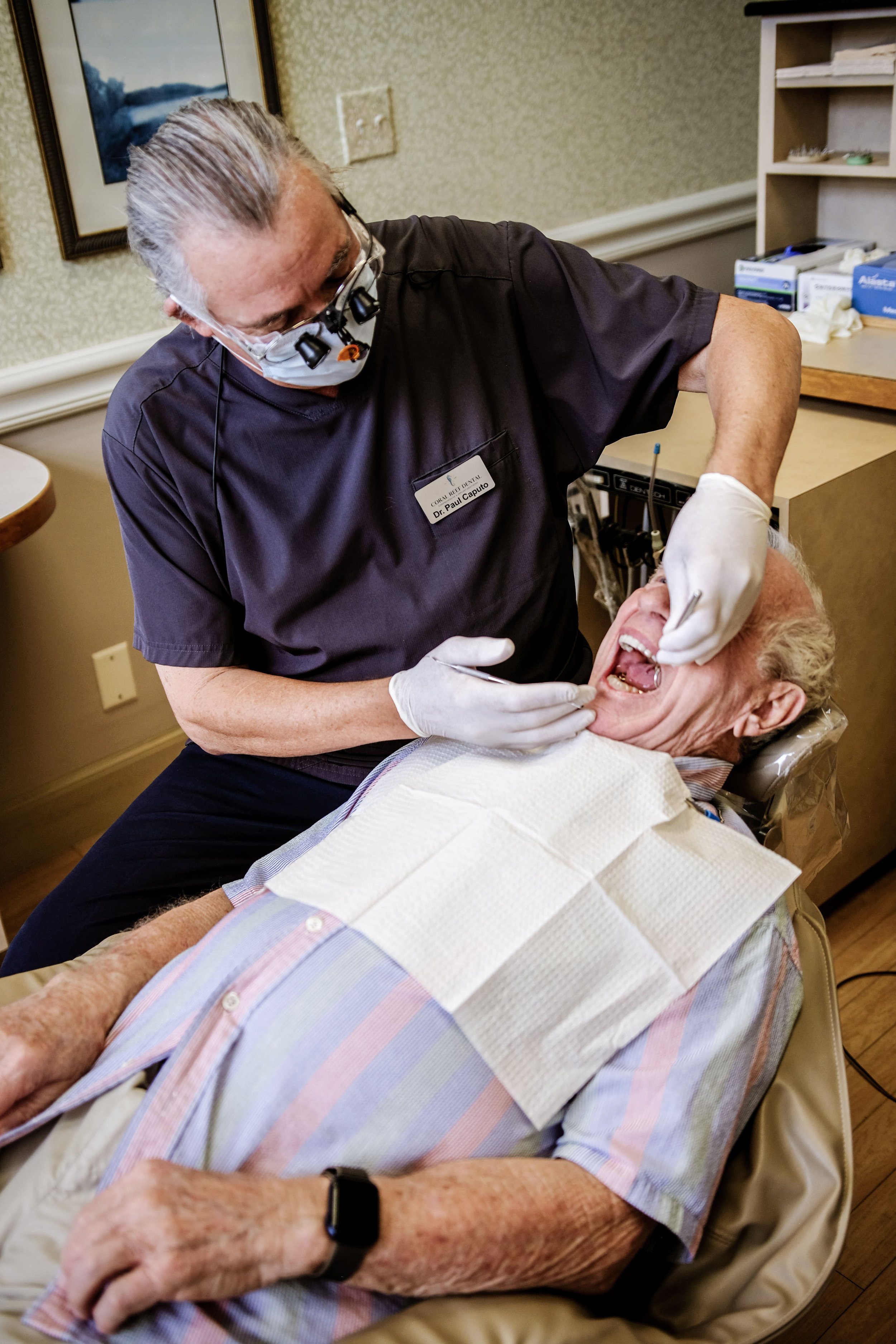
Dental Crowns
The terms crown and bridgework refer to a variety of tooth reconstruction techniques.
Crowns, often referred to as caps, are placed over what remains of a natural tooth after the tooth is prepared by the comprehensive dentist.
Crowns replace missing natural material, and replicate or improve the patients’ original appearance and bite.
Crowns are sometimes used to correct a bite discrepancy or solely for cosmetic effect, even in the absence of decay or other diseases.
Crowns can be constructed from any one of several materials including porcelain, precious or non-precious metals; and composites.
Crowns are non-removable, fixed in place using cement. In the absence of enough natural material, a post and/or buildup are placed prior to crown fabrication.
Crowns have many uses:
Crowns can repair a decayed or otherwise weakened or broken tooth.
Crowns are frequently used to restore teeth following a root canal.
Crowns are sometimes used for cosmetic purposes to improve the appearance, including permanently discolored tooth.
Linked crowns are used to secure loose teeth or, replace missing teeth.
Whether a true crown or a hybrid crown, also known as a “pontic”, the outward appearance is the same. Linked crowns with a pontic in the middle are most often referred to as fixed bridgework.
Fixed bridgework is used when a missing tooth or teeth are replaced with a non-removable prosthetic. The bridge can be supported by either teeth or dental implants. Dentures and partials refer only to removable prosthetics.
replacement of missing teeth
Before a patient can decide which method they want to use to restore their missing teeth, they will need to have a basic understanding of the options available to them here at our Palm Harbor area office. Take a look at the chart below, which outlines the main techniques our office uses for our tooth restoration patients. Then speak with Dr. Caputo about which method might be best for you.
Removable Dentures
Require Teeth to Secure in Place
Crowns Can Be Used to Secure a Partial Denture
Dental Implants Are Also Used to Secure a Partial Denture
Full Dentures
Sit on Gums
Held in place by Adhesive
Dental Implants Can Be Used To Secure A Full Denture
Tooth Supported
Requires Adequate Teeth Adjacent To Missing Teeth
Implant Supported
Replaces One or Multiple Missing Teeth
ORCan Be Used to Replace Removable Teeth
Once the tooth’s is prepared an impression is taken of the tooth and one or both opposing jaws in order to create the crown, a prosthetic, which is installed on the prepared area at a subsequent appointment.When a crown is used to repair a damaged tooth treatment begins with the comprehensive dentist removing damaged and/or decayed areas of the tooth, creating a stable environment for attaching a crown. In the absence of enough suitable host material a buildup is used to enlarge the tooth to support the crown.
Crowns replicate the patient’s natural bite with great precision.
When a tooth or several teeth are missing there can be severe complications to remaining teeth from the force of chewing and the absence of neighboring teeth to keep teeth properly aligned. If the situation is not corrected remaining teeth can separate, become misaligned or lost altogether.
Fixed bridgework is used not only to secure a partial denture in place, but also to provide sufficient strength and support to protect one’s remaining, natural teeth.
Course of Treatment
In the case of fixed bridgework, the teeth on either side of the denture are reduced in size and then crowned (capped) to affix the bridge and reinstate the patient’s natural bite and appearance. Crowns are integral and necessary part of this dental treatment.
As noted, crowns can be constructed from any one of a number of materials, these include:
Zirconia
Porcelain
Metals
Composites
While cost is and the desired appearance may be considerations, it is the overall strength and suitability of the material in a patient’s particular circumstances that first and foremost determine what materials are most suitable for creating a crown.






